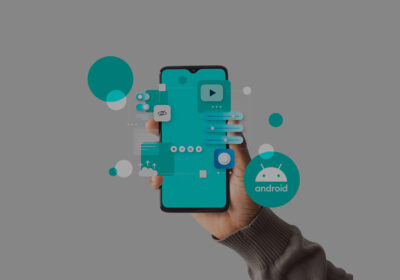Android app development has undergone significant advancements over the years. With millions of Android users across the globe, businesses are under pressure to deliver high-performance, seamless apps that offer great user experiences. As a result, it has become essential for Android app developers to choose the best frameworks to build robust, efficient, and feature-rich applications.
In 2024, several Android frameworks are leading the charge in offering faster development speed, greater flexibility, and enhanced functionality. These frameworks are suitable for a range of app types—from simple mobile apps to complex enterprise-grade solutions. Here are the top 5 frameworks for Android app development in 2024:
Flutter
Flutter, developed by Google, has rapidly gained popularity among Android developers for its ability to build high-performance apps for both Android and iOS from a single codebase. Based on the Dart programming language, Flutter provides developers with a rich set of pre-designed widgets and tools to create interactive and visually appealing user interfaces.
Key Features:
- Cross-platform development: Flutter allows developers to create apps for Android, iOS, and even web platforms with a single codebase.
- Hot reload: Developers can view real-time changes in the app without restarting, speeding up the development process.
- High performance: Flutter compiles code into native code, offering fast and smooth performance, especially for graphics-intensive applications.
- Rich set of pre-built widgets: A comprehensive set of customizable widgets makes UI design faster and easier.
Why Use Flutter? Flutter is ideal for developers who want to target both Android and iOS platforms without duplicating their efforts. It is especially suited for creating high-performance apps with sleek and custom UIs.
Kotlin Multiplatform Mobile (KMM)
Kotlin Multiplatform Mobile (KMM) is a powerful cross-platform development framework that enables developers to write shared business logic for both Android and iOS. Since Kotlin is the official language for Android development, KMM offers a seamless integration with Android Studio, making it easy for Android developers to adopt.
Key Features:
- Shared codebase: Developers can share business logic and models between Android and iOS applications, reducing time and effort.
- Native performance: KMM supports native UI components on both platforms, ensuring that apps maintain high performance.
- Smooth integration with Android Studio: Kotlin is fully integrated with Android Studio, making it easy for developers to get started with KMM.
Why Use KMM? KMM is perfect for teams familiar with Kotlin who want to build apps that offer native UIs while still sharing common business logic between Android and iOS. It’s ideal for developers looking to leverage the benefits of native performance while reducing duplication of work.
React Native
React Native, created by Facebook, is a popular cross-platform framework that allows developers to build Android and iOS apps using JavaScript and React. It bridges the gap between web technologies and native code, enabling the creation of high-performance applications while providing an excellent developer experience and access to a large ecosystem of third-party libraries.
Key Features:
- Cross-platform compatibility: One codebase can be used to build applications for both Android and iOS.
- Native performance: React Native enables apps to access native device features, ensuring optimal performance.
- Hot reloading: Developers can see changes instantly, which accelerates the development process.
- Large community and ecosystem: With a vast community and an extensive library of third-party tools, React Native simplifies development.
Why Use React Native? React Native is ideal for developers who are experienced in JavaScript and React. It’s especially beneficial for rapid prototyping and building cross-platform apps that need to run smoothly on multiple platforms while sharing business logic.
Xamarin
Xamarin, developed by Microsoft, allows developers to create native Android and iOS apps using C#. Based on the .NET ecosystem, Xamarin enables cross-platform app development with a shared codebase, providing native performance while supporting device features. It is widely used in enterprise-level applications where code reuse and seamless integration with Microsoft services are essential.
Key Features:
- Cross-platform development: Xamarin allows developers to create apps for Android, iOS, and Windows with a shared codebase.
- Native performance: Xamarin uses native APIs and compiles to native code, ensuring smooth performance on all platforms.
- Rich libraries and tools: Xamarin offers libraries for UI controls, gestures, and other native functionalities.
- Integration with Visual Studio: Xamarin integrates seamlessly with Visual Studio, providing developers with a powerful environment for app development and debugging.
Why Use Xamarin? Xamarin is ideal for developers who are already familiar with the .NET ecosystem and C#. It is particularly suited for enterprise-level applications and businesses that require integration with Microsoft technologies and services.
Android Jetpack
Android Jetpack is a collection of libraries, tools, and architectural components provided by Google to simplify Android app development. While Android Jetpack is not a cross-platform framework, it offers powerful Android-specific tools to enhance app architecture, UI, background tasks, and more. Jetpack makes development easier and more efficient, especially for handling common app complexities.
Key Features:
- Modular components: Jetpack includes a variety of components, such as Navigation, LiveData, ViewModel, WorkManager, and more, to simplify app development.
- Backward compatibility: Jetpack ensures apps work on older Android versions while taking advantage of newer features on more recent versions.
- Lifecycle management: The architecture components provided by Jetpack help with better management of UI and data lifecycles, improving app performance.
- Architecture tools: Jetpack’s architectural components reduce boilerplate code and make maintenance easier by adhering to recommended app structures.
Why Use Android Jetpack? Android Jetpack is ideal for developers who want to streamline their app architecture and enhance productivity. It is particularly useful for managing app complexities, improving app behavior across devices, and speeding up development.
Conclusion
In 2024, selecting the right framework for Android app development is crucial to ensuring the success of your project. Whether you are building cross-platform apps or improving native Android app performance, the frameworks mentioned above provide powerful tools and capabilities to help you achieve your goals. Here’s a summary of the top 5 frameworks:
- Flutter: Best for building high-performance cross-platform apps with rich UIs.
- Kotlin Multiplatform Mobile (KMM): Ideal for sharing business logic between Android and iOS while maintaining native UIs.
- React Native: Perfect for JavaScript and React developers seeking cross-platform development with native performance.
- Xamarin: Best for developers familiar with C# and .NET, particularly for enterprise applications.
- Android Jetpack: A set of powerful Android-specific tools to improve app architecture, performance, and maintainability.
Each of these frameworks has its own strengths, and the best choice depends on your project requirements, team expertise, and the type of app you wish to build. By selecting the right framework, you can significantly streamline your development process and create a successful app in 2024.





